The capital of Spanish Catalonia is a true tourist mecca: this beautiful, cozy, clean city attracts with its unique appearance and abundance of architectural monuments that capture its history. Barcelona carefully preserves its past, the focal point of which is its numerous museums. This article provides a list of the best museums in Barcelona.
Here you will find all the necessary useful information, such as addresses and directions on how to get to Barcelona’s museums by yourself. From the article, you will learn what makes each museum interesting and why crowds of tourists from all over the world strive to visit them every year.
Picasso Museum
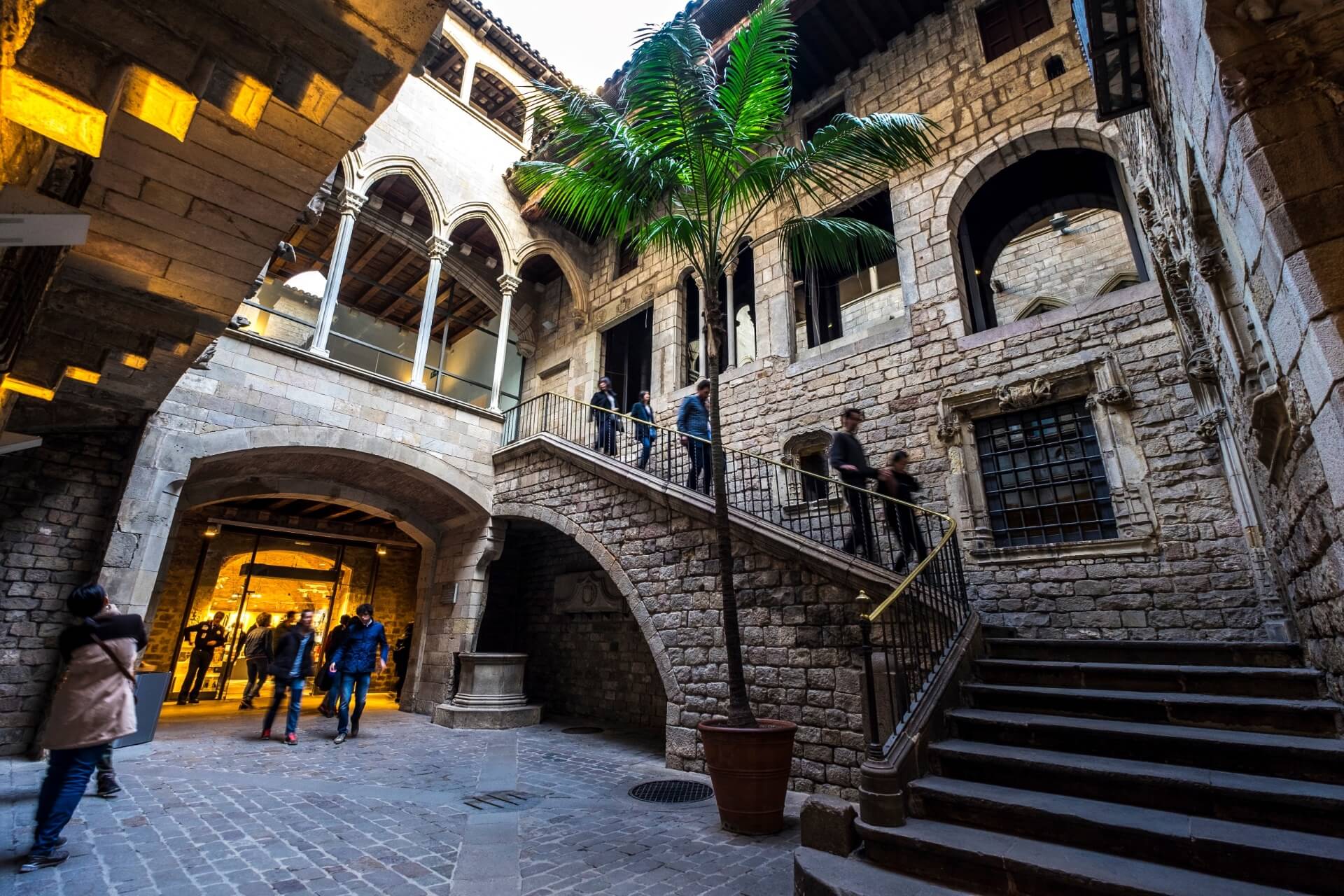
The most visited museum in Barcelona is located in an old Gothic mansion from the 15th century, which once belonged to Berenguer de Aguilar. The building consists of five adjacent medieval halls and, along with the recently opened research center, occupies half a block. The artist himself wanted to open it specifically in Barcelona, not in Malaga, where he was born.
The opening in 1963 was a significant event of the year. The palace, which is itself a museum object and also houses the artistic masterpieces of the genius founder of Cubism in painting, became extraordinarily popular. The exhibitions contain 15 collections, presented with priceless masterpieces from children’s pencil sketches to the genius paintings of the “Pink” and “Blue” periods.
The treasury’s foundation was made up of sketches, engravings, and drawings (600 works) donated by the artist to his friend and secretary Sabartes. Many paintings were donated to the museum by Barcelona residents who were fans of Picasso’s work; the fund included paintings, books, sketches given by Picasso himself. You cannot help but admire the bright paintings created by the child prodigy at a very young age. Unique Cubist works are of interest.
The true gem of the collection is the “Las Meninas by Velazquez” cycle, which includes 58 variations on Velazquez’s famous painting. The subjects of the paintings symbolize the freedom of the author’s creative thought, the flight of fantasy, and an original worldview. Ceramics items, donated by Picasso’s widow, and the sculptural works of the Cubist also attract attention. Just as in his lifetime, his works were highly valued, and now interest in them continues to grow. Art lovers and collectors are willing to pay fabulous sums for the masterpieces of the famous Spaniard.
The museum is located at Carrera Montcada 15-23 in the Gothic Quarter of the Born-Ribera district. You can get there by metro, buses, taxis.
- Metro Line 4 – Jaume I Station
- Metro Line 1 – Arc Triomf Station
- Metro Line 3 – Liceu Station
- City buses: No. 39, 51 – Passeig Picasso stop; No. 17, 19, 40, 45 – Via Laietana stop; No. 14, 59 – Pla de Palau stop; No. 120 – Princesa stop.
Salvador Dali Museum
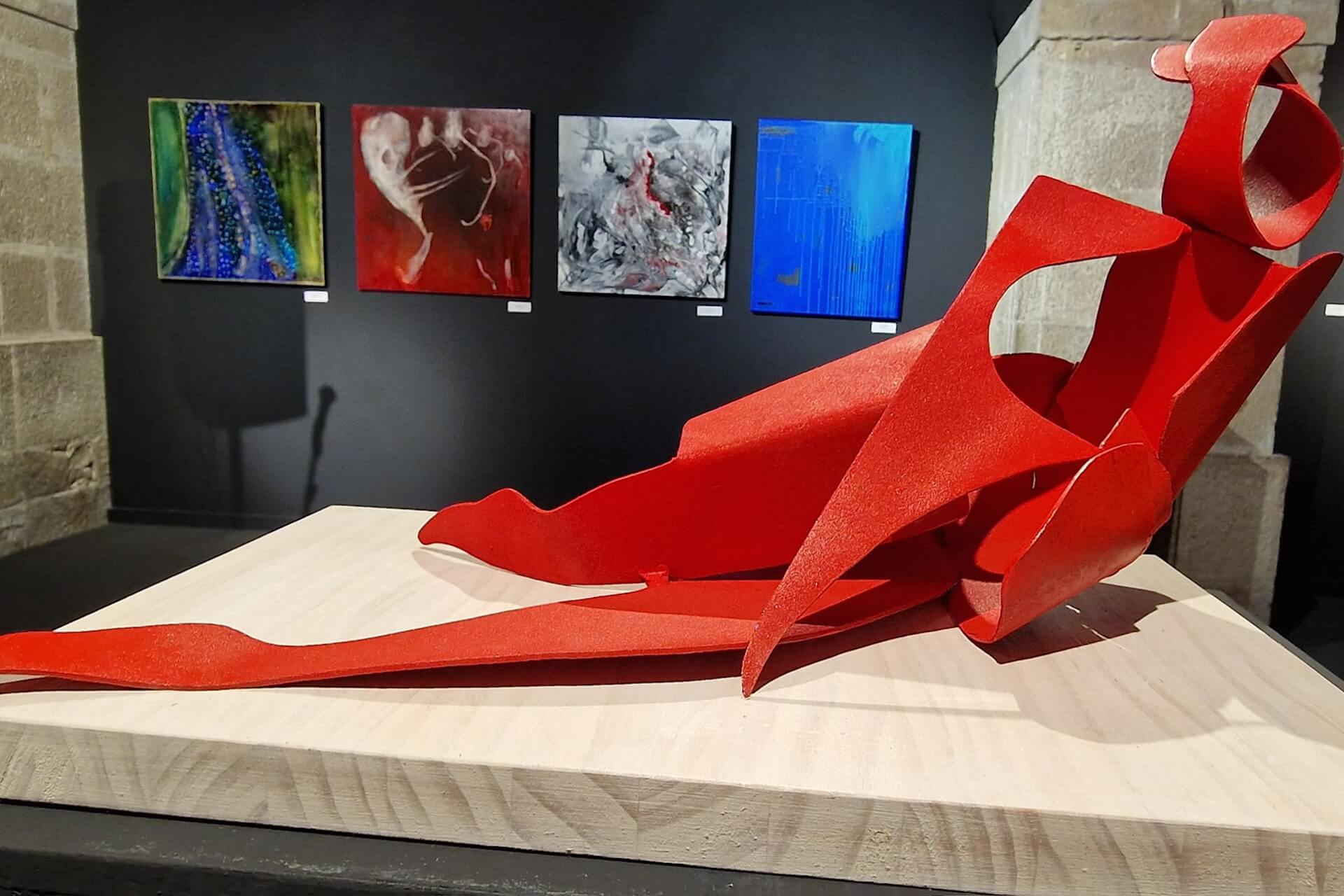
It is called Real Circulo Artistico and is not as well-known as the museum in Figueres, although it houses many artistic and sculptural masterpieces of the great surrealist. Its name translates to the Royal Artistic Circle of Barcelona. It is one of four museums organized in Spain as a sign of deep love and admiration for the planet-scale talent of the genius Catalan.
The founders were essentially three artists who made considerable efforts to find a suitable building and complete all formalities. In 1881, the Royal Artistic Circle of Barcelona was opened not as a museum, but as a club of artists where they met, held their sessions, reviewed new trends in visual art, and organized exhibitions.
In 1959, the Dali Museum was officially opened in the building with permanent exhibitions of his works, located on the 1st floor. Some of them were transferred from private collections. Already at the entrance, you begin to understand that you are in for an unusual sight: a huge egg symbolizing life according to Dali; a sculptural portrait of the artist himself with a dolphin on his head; a surreal human figure on a stone of winding contours.
What is inside will not disappoint anyone: exotic sculptures, sketches, decorative glass items, various installations, photos amaze and delight.
The museum is located in the Gothic Quarter at Dels Ars, 5, a few steps from the Cathedral of Saint Eulalia. You can get there by metro: Line 3 – Liceu Station, Line 4 – Jaume I Station. Walking from these stations takes 8-10 minutes.
Museum of Contemporary Art
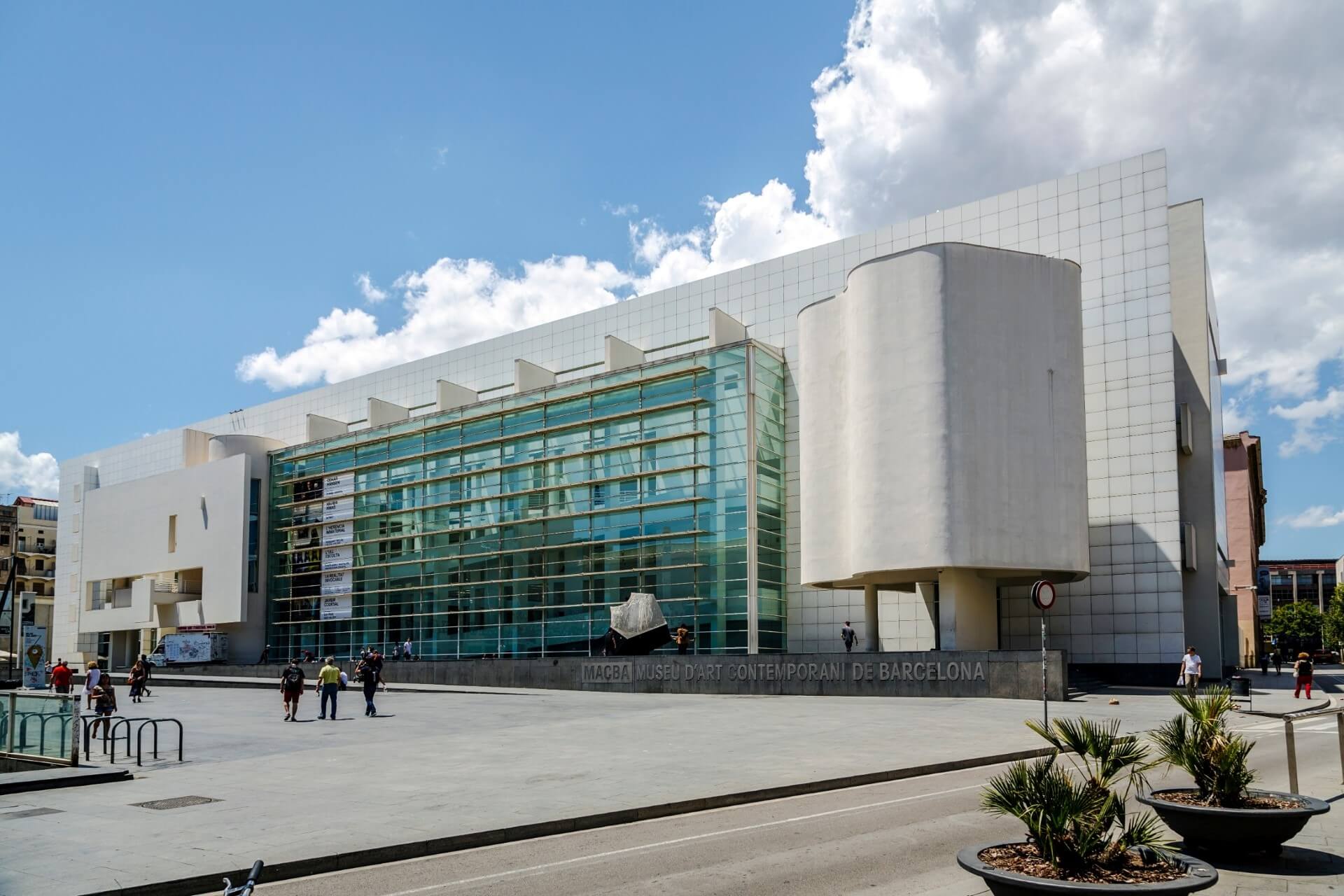
It’s impossible to pass by this amazing architectural structure: it stands out with its modern design among ancient mansions. The rectangular building with shaped white protrusions of unusual forms on the sides and a huge glass facade, built according to the original design of Richard Meier, was opened as the Museum of Contemporary Art in the fall of 1995.
The external design fully corresponds to its purpose: it features works by contemporary Spanish artists of the 20th century by periods: the 40s-50s, 60s-70s, 80s-2015. In addition to the permanent exhibition, there are temporary ones (3-4 months). Here you can see amazing works of art in various directions: paintings, engravings, sculptures, installations, sketches, unique items made of stone, glass, plastic, latex.
The museum is located at Plaça dels Àngels, 1. You can get there by metro Universitat, Catalunya.
Chocolate Museum
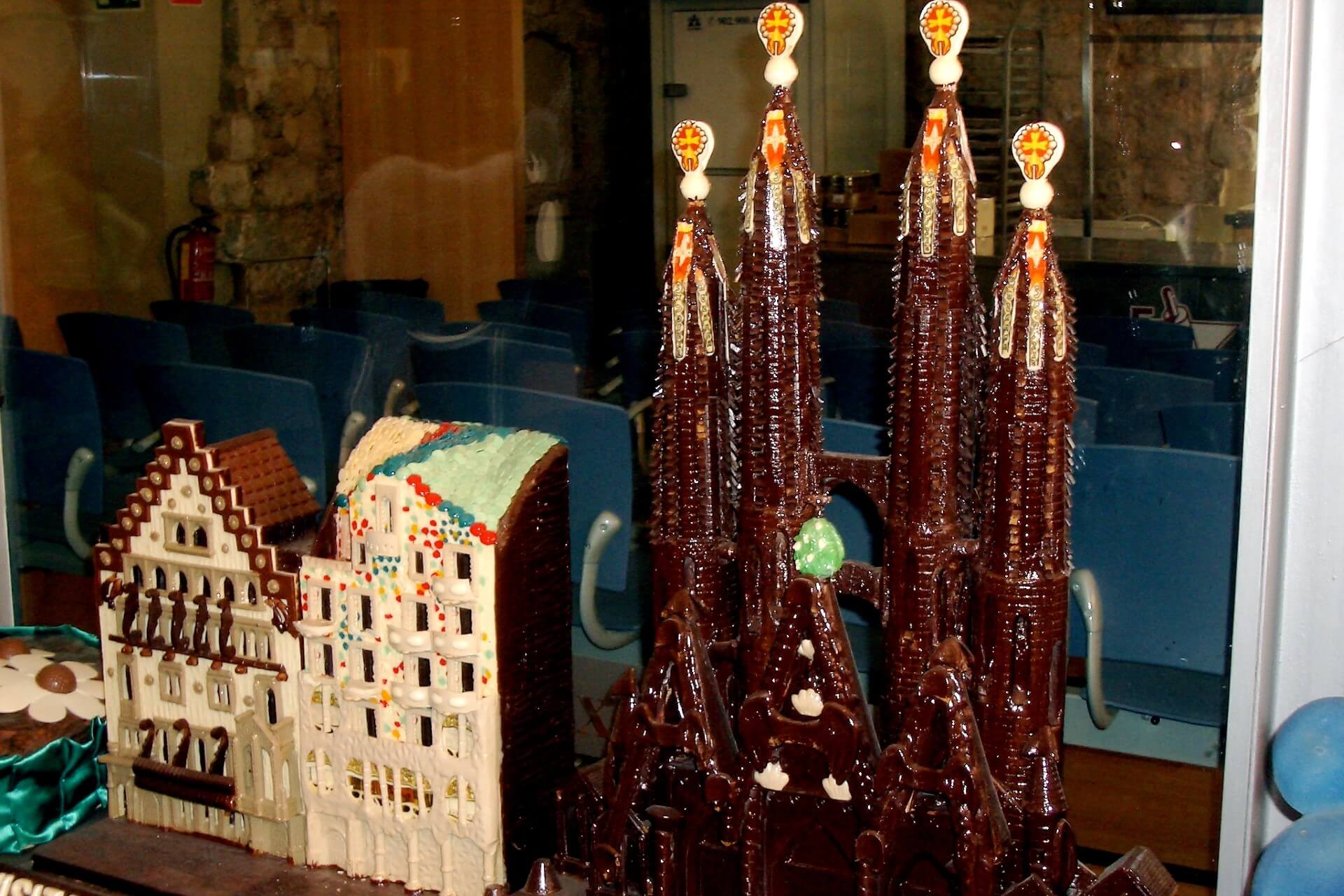
A favorite treat for many has its origins with the indigenous people who first tasted the bitter taste of cocoa beans. When Europeans who flooded into America figured out how to mix ground beans with sugar, they created a very tasty and healthy product. It is no wonder that museums are dedicated to it, one of which is in Barcelona and is very popular with residents and tourists.
This is a great place to visit with children and parents. Each visitor is given a chocolate bar before viewing the exhibits, starting the “sweet journey.” Here, not only the entire history of chocolate is demonstrated, but also historical and multimedia characters captured in chocolate sculptures and figurines. They amaze with their realism and craftsmanship.
You can’t take your eyes off the installation with windmills depicting Spain’s national hero Don Quixote, his faithful squire, and their loyal animals. There is so much sweet absurdity and love in these chocolate figures! Here you can see Gaudi’s architectural masterpieces and other interesting architectural monuments, sculptures of historical figures, and great personalities of the past. Visiting the museum leaves unforgettable impressions, especially for children participating in making chocolate figures.
- Metro Red Line (L1) – Arc De Triomf Station
- Buses: 14, 39, 40, 41, 42, 51, 59, 64, 141.
Gaudi House Museum
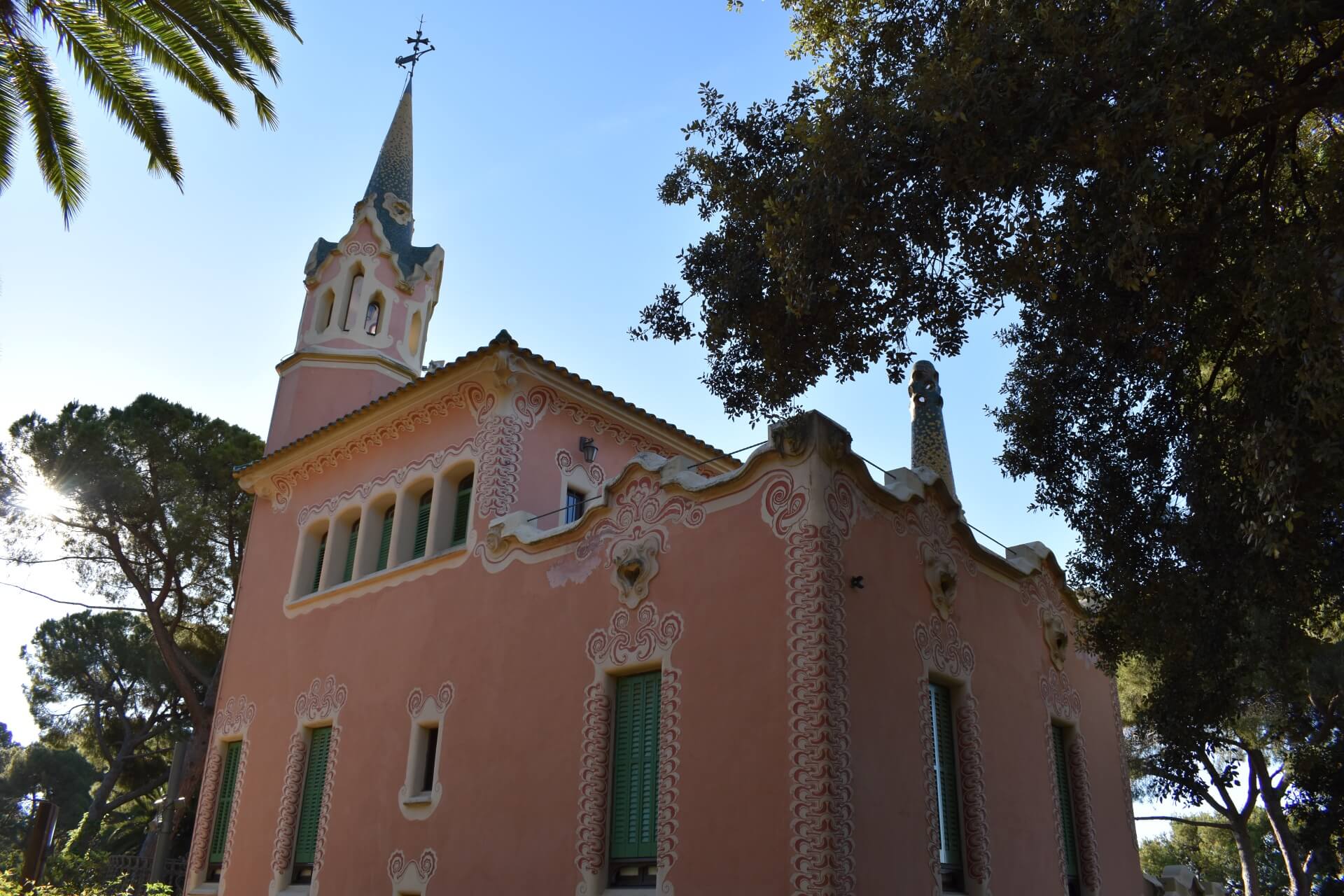
This fairy-tale-like house is located in Park Güell, where all the wonders were created by the miracle-working architect. Everything here is unusual, from the garden fence, facade, and roof to the exhibits inside. Here are presented Gaudi’s personal belongings, exclusive furniture pieces, paintings. Each exhibit embodies the genius of this unique master, evoking admiration from tourists worldwide. Antonio Gaudi created several architectural masterpieces during his life.
The museum is located at Carrer de Olot, 1, bus routes 24, 92, 116.
Maritime Museum
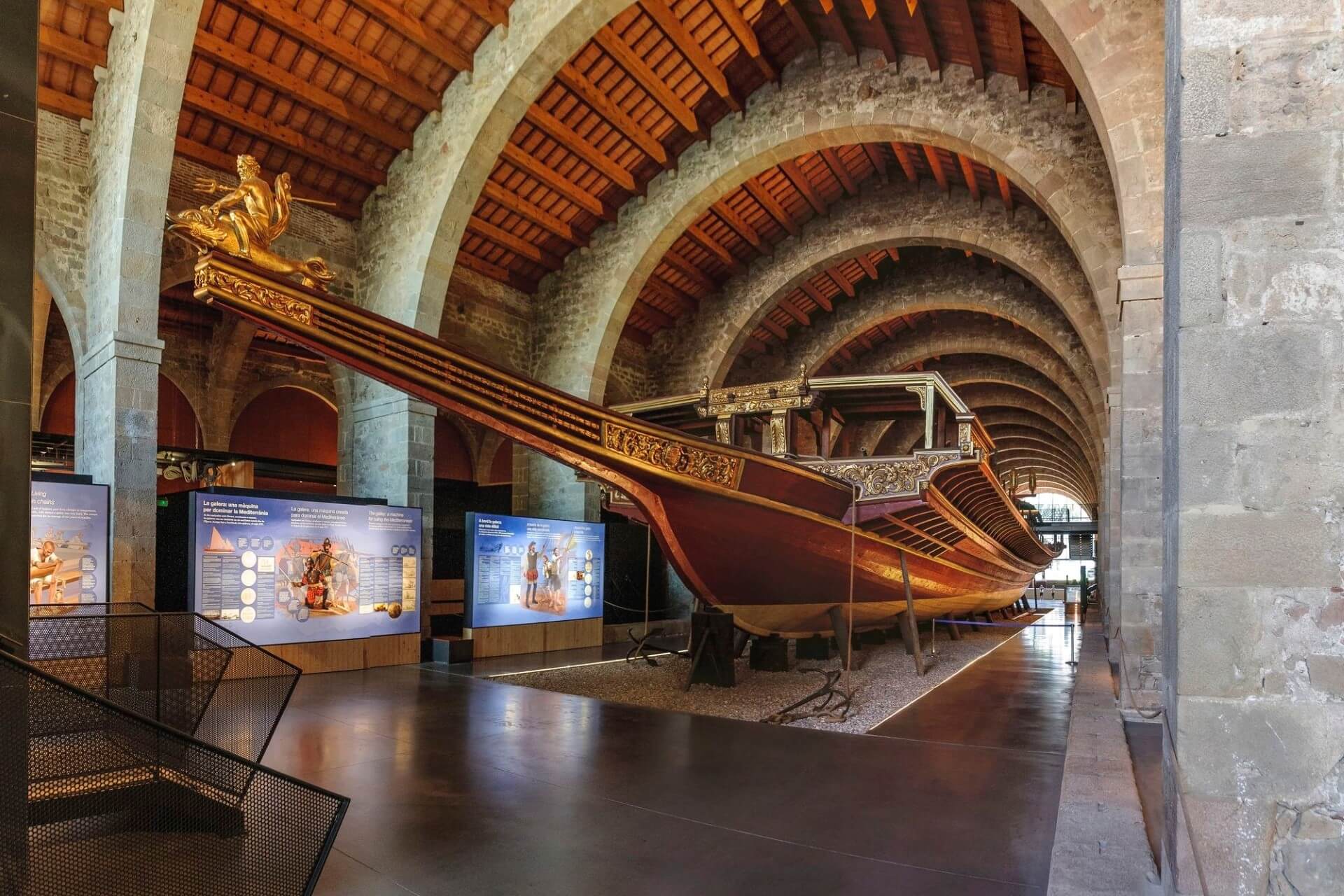
It is symbolically located in the building of the former Royal Shipyard, an example of a unique medieval Gothic structure, unmatched worldwide. Opened in 1929, through its invaluable exhibits, it illustrates the fascinating history of Spanish seafarers and the development of shipbuilding and navigation.
Visitors can see models of famous war and passenger ships, navigation instruments, numerous maps, and marine paintings. A truly priceless authentic exhibit is the four-masted schooner Santa Eulalia, moored at the pier in 1918.
Address: Av de les Drassanes. Metro Line 3, Drassanes Station. Buses: 14, 20, 21, 59, 64, 91, 120, D20, H16, Barcelona Bus Turistic.
FC Barcelona Museum

Even people far from football know the names of Maradona and Messi, the famous footballers who glorified FC Barcelona, whose museum was opened in 1984 at the entrance to the Camp Nou stadium. This grand sports facility is visited by many fans and tourists, many of whom strive to visit the interactive museum, consisting of three halls.
One of them features an interactive touchscreen displaying the detailed history of the club, data from recent matches, and interesting goal moments. Anyone can leave their comment. The second hall’s exhibits include various football-related items: paintings by Dali, Tapies; unique balls; an interesting collection of football rarities by Ornaque, personal belongings of famous players.
The main objects of fans’ reverence are the boots of football wizards of the past and present: Ronald Koeman and Leo Messi (the latter’s are golden). Maradona fans have the joy of seeing their idol’s shirt. In the trophy hall, there are cups, including the UEFA Champions League Cup, against which you can take a photo. A separate ticket to the museum is not sold; it is included in the cost of the stadium tour. To save money, it is best to buy the ticket at Gate 9, where it is cheaper.
Address: Carrer de Aristides Maillol, 12. You can get there by metro: Line 3, Maria Cristina or Les Corts Station; Line 5, Collblanc or Badal Station. Buses: 7, 15, 43, 67, 68, 74, 75, L12, L50, L60, L62.
Wax Museum

Opened in 1973, it is housed in a beautiful former bank building. It features 360 characters of real people, movie and literary characters. All figures are strikingly similar to the originals: their characteristic features, poses, eye color, hair are accurately conveyed. Upon entering, you immediately see “Pope John,” followed by a row of well-known historical and political figures who played significant roles in the planet’s fate. As a sign of respect for great personalities, wax copies of genius musicians, composers, artists, poets, writers, and directors have been created.
Here you have the opportunity to approach Beethoven and Wagner, Shakespeare and Cervantes. The second floor is dedicated to famous actors and athletes. A special exhibition is presented with scenes based on literary works. For example, Jules Verne’s heroes in the “Nautilus,” where the “sea bottom” with fantastic inhabitants is depicted outside the portholes. Visitors can get a thrill in a peculiar “torture chamber.” No one will be bored here.
Address: Passatge de la Banca 7, 08002 Barcelona, metro: Green Line, Drassanes Station. Buses: 14, 36, 57, 59, 64, 91, 157.
Museum of Optical Illusions
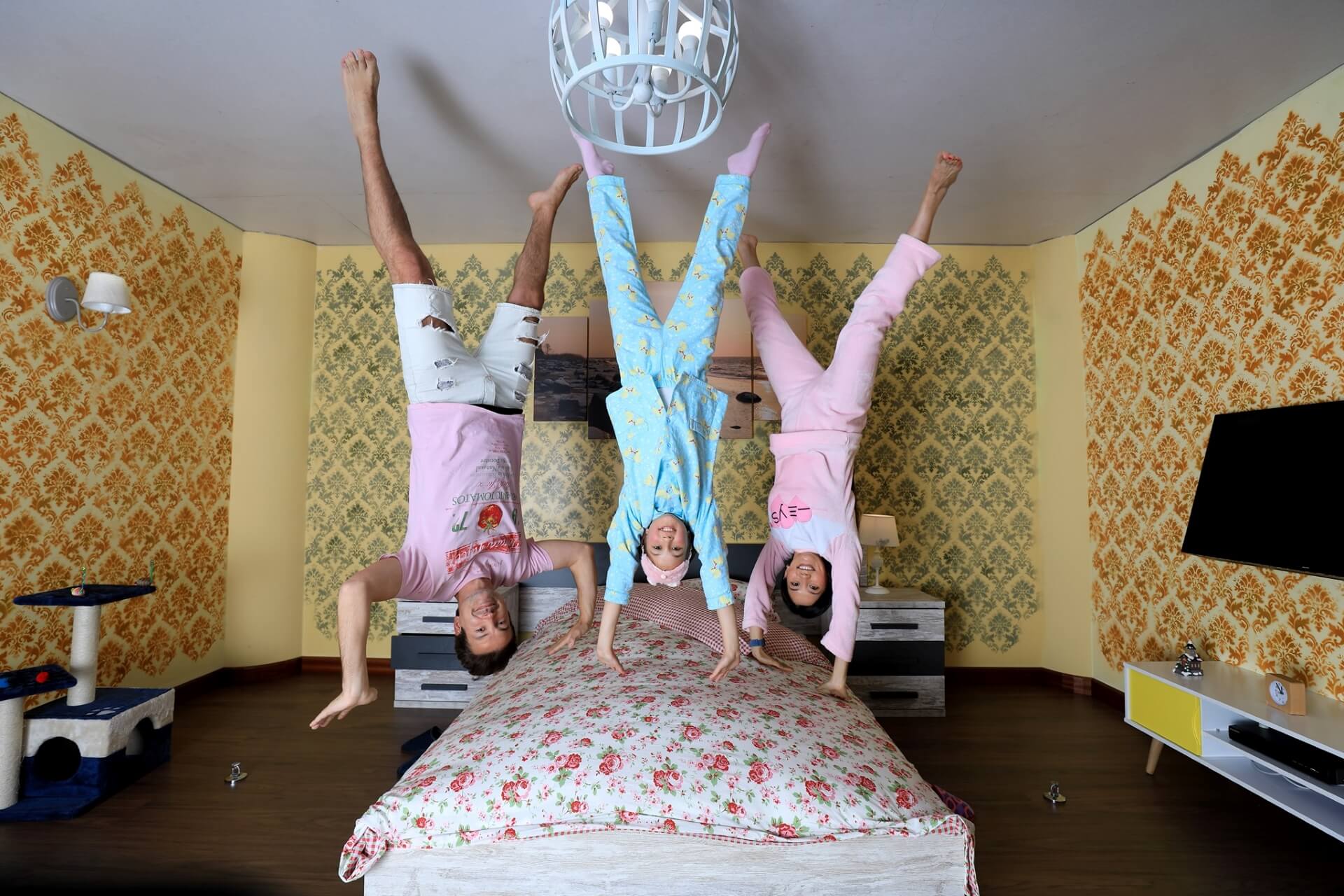
This is the newest museum in Barcelona and the first in Europe with 3D images, allowing visitors to feel like participants in the events on the screen: being among daring pirates, running from zombies, standing on the deck of the “Titanic,” becoming a Lilliputian among giant toys. Here everyone has the right to take photos, for which there are special markers on the floor indicating the most successful angles.
Visiting this unusual place brings a sea of pleasure and joy because the organizers have come up with many various entertainments. An amazing jam session show is held in a wonderful bar in a kind of “wonderland,” where visitors become the heroes.
Address: Jonqueres, 15. Metro: Urquinaona Station.
Joan Miró Museum
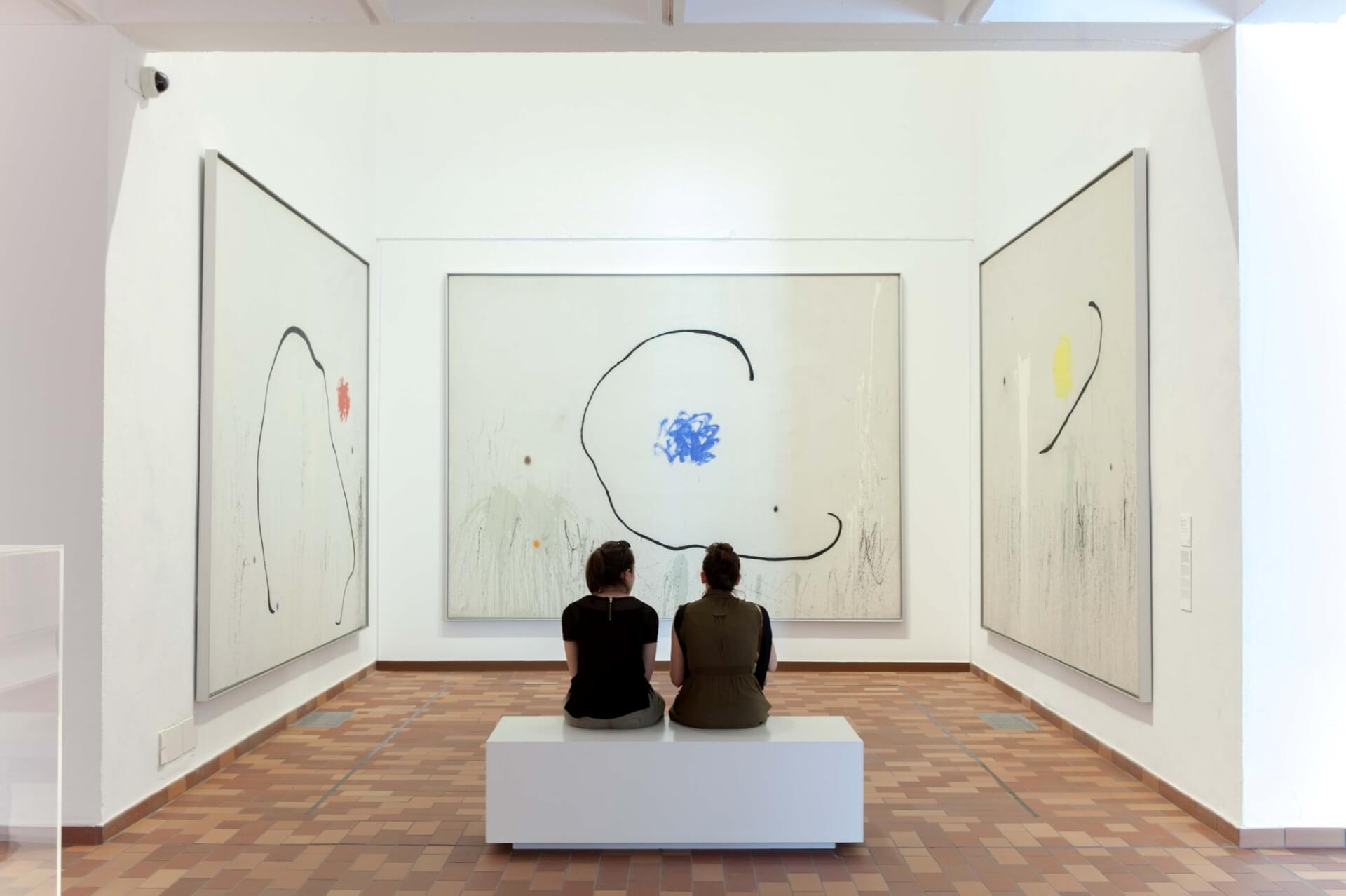
The very appearance of the building allows one to conclude about the surrealist direction of the Spanish artist’s work. The unusual design of the amazing structure is the result of the work of Miró’s friend, architect Sert. The first major exhibition in 1968 had such a resonance in society that, on the initiative of friends, the Miró Foundation began to be created, becoming an active museum in 1975. The foundation-museum’s exhibitions contain 14,000 items: 8,400 of them are works by the abstractionist and surrealist himself: drawings, sculptures, paintings.
The artist was not afraid of experiments: he painted on fabrics, ceramics, canvas, and paper. The museum has 9 textile works and 4 stunning ceramic panels. His sculptural masterpiece “Woman and Bird” (22 meters high) is known worldwide as an unsurpassed example of surrealist sculpture. Here you will have the chance to see artistic masterpieces by more than 10 other equally famous and talented artists. The Joan Miró Museum is a guide to the magical world of art.
Buses: 55, 150; Barcelona Bus Turistic – Fundació Joan Miró stop. Montjuïc Funicular.
Museum of the History of Barcelona
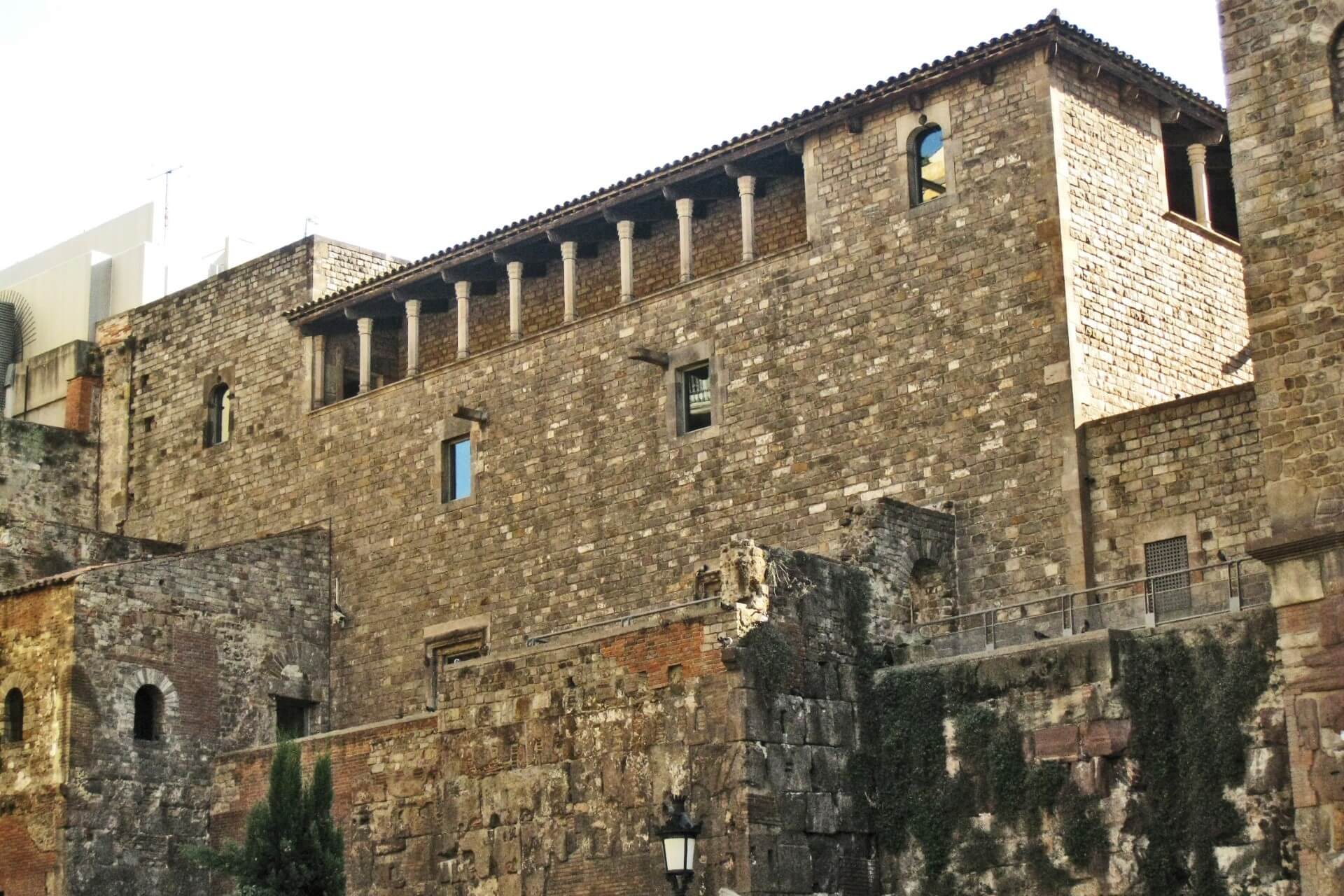
In the old Gothic Quarter of Barcelona, on Royal Square in the medieval mansion Casa Clariana-Padellàs, is the Museum of the History of Barcelona. Its ensemble also includes the ancient Roman settlement discovered during excavations under Plaça del Rei, from which the history of Barcelona is counted.
Descending by elevator to the underground city, you will see fragments of ancient buildings and streets with pavements, Roman baths, and a sewage system that is over 2,000 years old. The main museum building exhibits tens of thousands of items from the Neolithic era to the 20th century. The collections of Roman sculptures and portraits, collections of medals from different eras, exhibitions of old engravings, pottery, and furniture are particularly interesting.
There is increased attention in the museum halls to interactive corners where visitors can wear knight armor, sit on a wooden horse, learn about the strength of ancient warriors by feeling the weight of the shield and sword, and show skills in other exciting activities.
Museum of the History of Catalonia

The Museum of the History of Catalonia is located in the Old Port of Barcelona in the restored former warehouses of the Mar Palace from 1881. On an area of 4,000 m², thematic exhibitions on the region’s history are presented. Here are displayed the remains of an upright man aged 450,000 years, Neolithic tools, cultural items of Eastern peoples, Greeks, and Phoenicians who inhabited this land at different historical periods and influenced the formation of Iberian civilization from the 7th century.
The exhibitions covering the 12th-16th centuries include territorial conquests, the emergence of cities, the growth of trade, Romanesque and Gothic art, and the tragic pages of history associated with hunger and the plague epidemic. Interesting exhibitions of the 17th-18th centuries about Baroque style and the events of the Civil War. The historical retrospective is completed by the events and cultural achievements of the 19th and 20th centuries.
National Art Museum of Catalonia

The National Art Museum of Catalonia amazes with its treasury of masterpieces by outstanding masters of painting, sculpture, and applied arts. The palace in which it is located rises on Montjuïc Hill, offering a stunning panorama of Old Barcelona. The museum features 8 permanent exhibitions representing the wealth of world culture and all types of art from different eras.
From the Romanesque art of the beginning of the millennium, the transition to Gothic with paintings by Italian artists is traced, then immersion in the Renaissance and Baroque eras. The artistic collection from the mid-19th to the second half of the 20th century is impressive. The numismatic section presents an extensive collection of coins, starting from the 6th century BC.
Frederic Marès Museum

In the Gothic Quarter of Barcelona, in one of the buildings of the Royal Palace on Plaça de Sant Iu, there is a stunning museum named after the artist and collector Frederic Marès. Monumental art lovers will appreciate the sculptures of the antiquity era: masters of Iberia, Ancient Greece, Carthage. A separate exhibition introduces the works of sculptors from Aragon and Castile who created in the 15th century. The collection of crucifixes and crosses made of wood and metal from the 14th to the 17th century is interesting.
On the second floor, the works of artists and sculptors from the 15th-19th centuries from different countries, the sculptures of Catalan sculptors, and other regions of the country are impressive. The religious theme is represented by sculptures depicting the Madonna and Child and the Holy Family. Here you will see fascinating exhibitions of the “Sentimental Museum” from ancient castles with keys, snuffboxes, and smoking pipes, theater binoculars, money from different centuries, and other household items that vividly introduce the way of life of Catalans of past centuries.
Motorcycle Museum
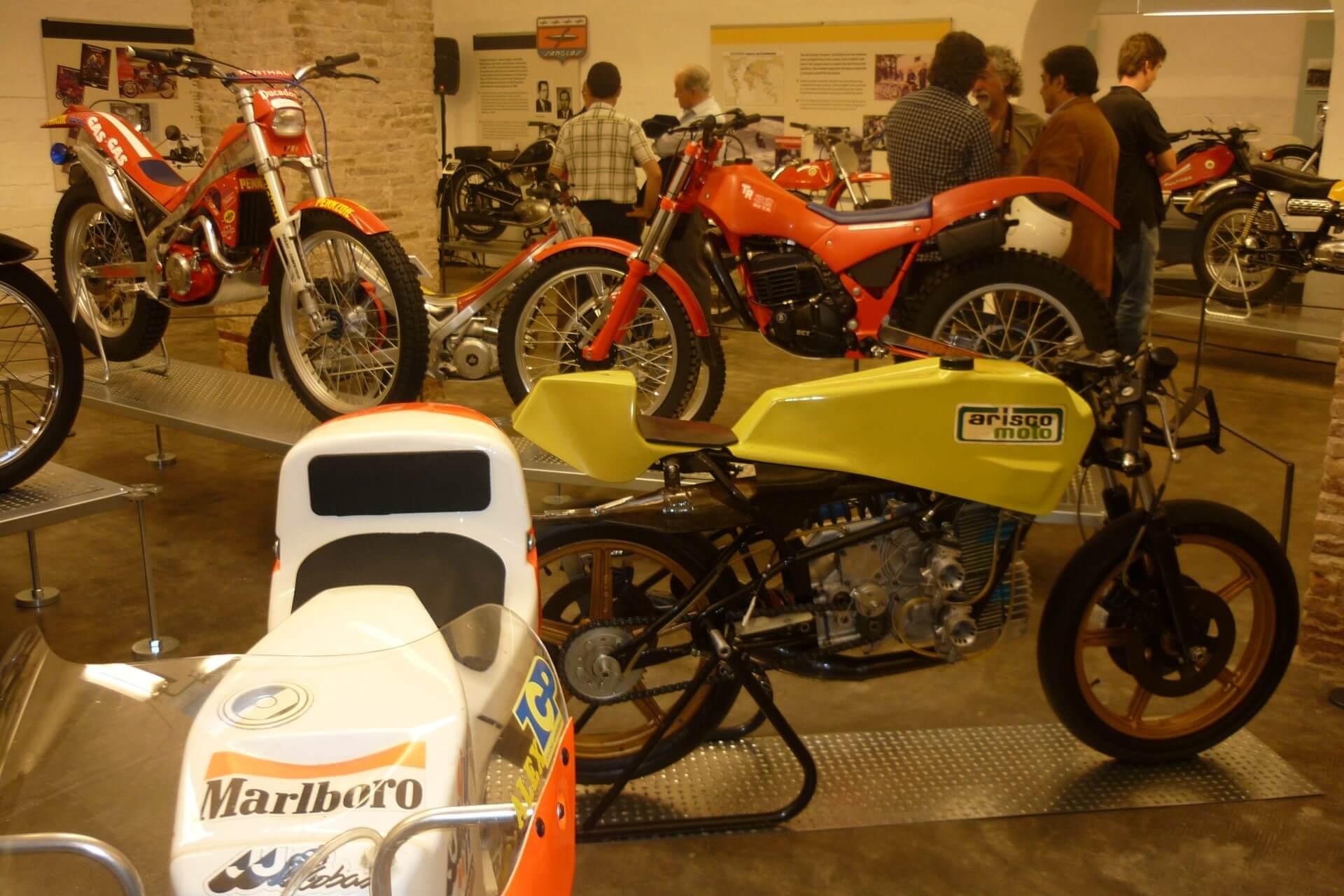
The Motorcycle Museum “Museo de la Moto” in Barcelona opened in 2011 due to the enormous popularity of this transport among city residents. It occupies the lower floors of the medieval monastery of Sant Felip Neri, with an area of 600 m². The permanent exhibition covers the history of Catalan motorcycles from 1905 to 2010 and the products of more than 150 motorcycle factories in the autonomy. The leading place is occupied by motorcycles of famous brands: Montesa, Bultaco, OSSA, and Derbi, which gained international recognition.
Unique motorcycles produced in the world in small series and world brands are periodically exhibited here, presentations of new models and motorcycle events projects are held. The museum has a shop with exclusive and unique accessories for motorcycles, technical literature, and parts.
Museum of Natural Sciences

The Museum of Natural Sciences in Barcelona, with more than 3 million specimens, is over 130 years old. An enormous number of exhibits, divided by branches of natural science, are based in different parts of the city: in the Forum building on Leonardo da Vinci Street, in the Citadel Park in a classic architecture building, in the Ciutadella Park in the “Three Dragons” castle, and the Botanical Garden on Montjuïc Hill.
The largest exhibition is located on two floors of the blue triangular Forum, covering an area of 9,000 m² – the Blau Museum. In the spacious lobby, visitors are greeted by a huge whale skeleton. The journey continues in dimly lit halls with exhibits on the history of the origin of life on earth, accompanied by light, sound, and video effects.
Behind the glass of the exhibition stands are samples of geological rocks, minerals, precious stones, and metals. Another exhibition introduces the world of fungi, algae, and microorganisms. Preserved reptiles are stored in glass vessels. The vast collection of dried insects and models of animal stuffed figures is impressive.
CosmoCaixa Science Museum
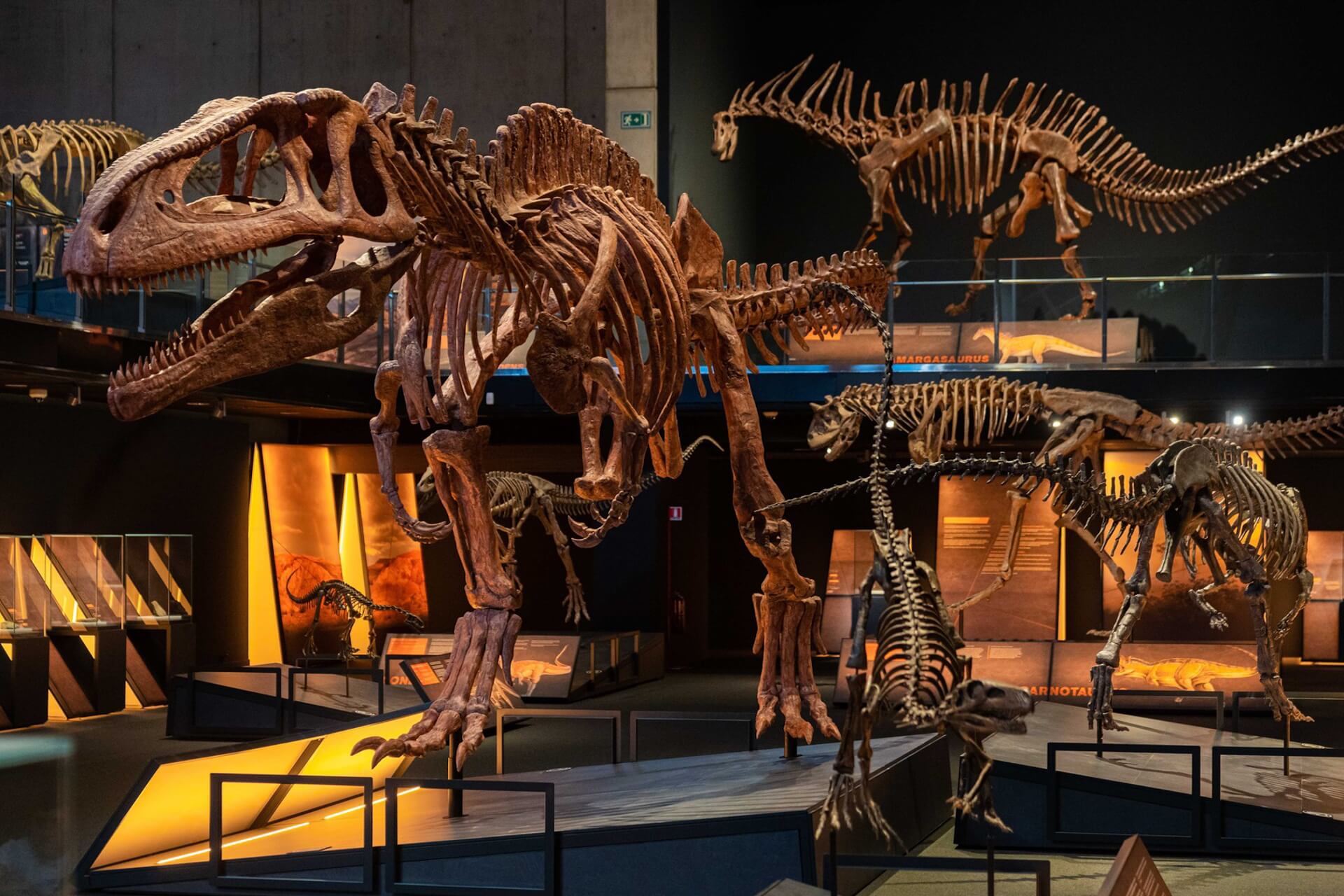
CosmoCaixa is Barcelona’s museum of natural science wonders located on the outskirts near Mount Tibidabo in a building with an area of 45,000 m². Here, it is easy to understand the laws of sciences about the surrounding world. CosmoCaixa starts with a square where, before entering the museum, two satellite antennas are shown, clearly demonstrating how sound waves with words are transmitted from one antenna to another.
In the lobby, visitors are greeted by a life-size figure of Albert Einstein. Everything here is amazing: a 30-meter descent down a huge spiral wrapped around the Amazon tree and an ascent up a glass escalator, Foucault’s pendulum, an accurate reproduction of the Amazon flooded forest, and the earth in section.
Captivating installations depict the origin of lightning and tornadoes, how volcanoes erupt and earthquakes occur, the forces of gravity and friction. The planetarium opens up the world of planets and celestial bodies in an engaging way.
Archaeological Museum of Catalonia
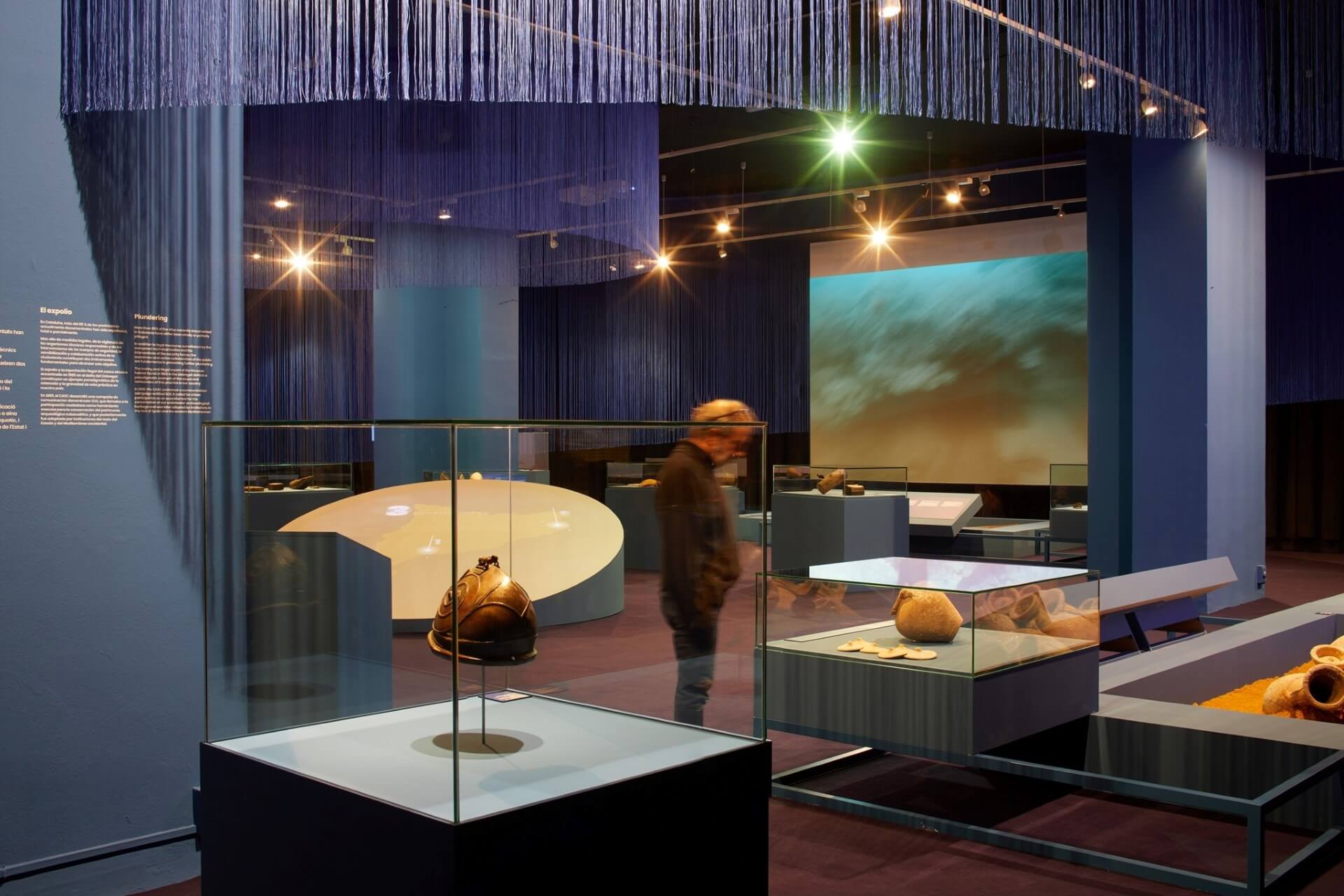
In Montjuïc Park on Paseo de Santa Madrona Street, in the former Palace of Fine Arts, lie the exhibits of the Archaeological Museum of Catalonia. It houses five rich thematic collections illustrating:
- Prehistoric times of the Paleolithic, Neolithic, Bronze, and Iron Ages
- Phoenician and Greek civilizations from the 9th to 3rd centuries BC
- The emergence of Iberian culture on the territories of Spain and Portugal in the 7th-3rd centuries BC
- Roman rule beginning in the 3rd century BC and lasting for 700 years
- Collections related to the Visigoths’ presence in Catalonia
In all the collections, it is interesting to trace the development of tools, household items, crafts, clothing, and artistic culture.
Casa Milà (La Pedrera)
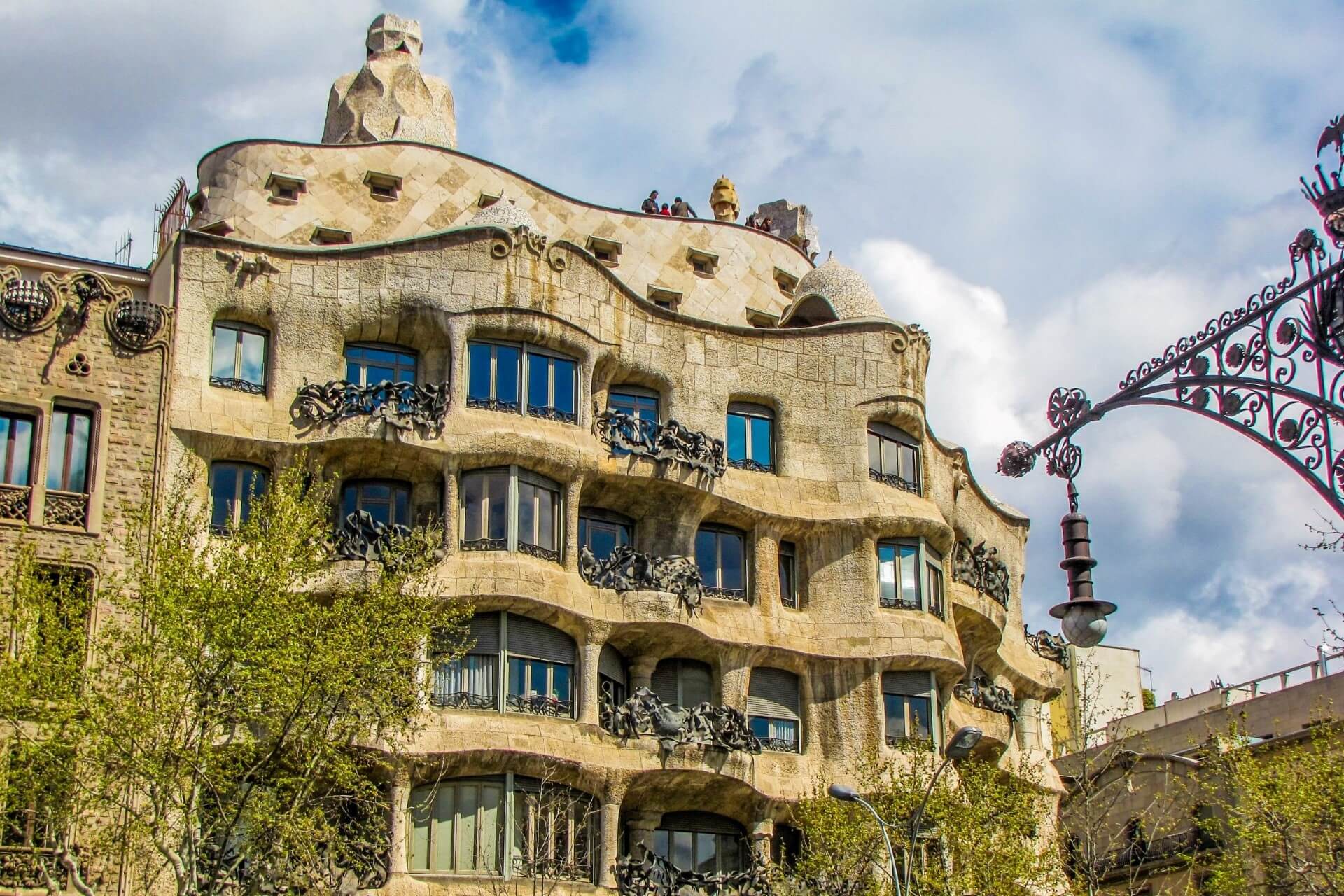
Casa Milà, built at the beginning of the 20th century in the center of Barcelona on Passeig de Gràcia, is the last secular work of architect Antoni Gaudí. The imposing Casa Milà is an architectural masterpiece that rightly occupies a place in the UNESCO World Heritage list. Inside, the mansion is no less extravagant than outside. There are no load-bearing walls, and every piece of furniture invokes amazement with its unusual appearance, speaking of Gaudí’s boundless imagination. One of the floors houses an exhibition dedicated to the architect’s work.
The next floor recreates the environment of an apartment from the past century, with furniture, dishes, and clothing. The most surprising part of Casa Milà is the roof, with chimneys of bizarre shapes depicting warriors and monsters, stairs, and gardens. The fantastic architectural ensemble can be seen by going to the roof terrace, where no tourist leaves without taking photos.
Poble Espanyol (Spanish Village)

A journey through the Spanish Village in Barcelona reveals the architectural diversity of Spain’s regions to tourists. This unique open-air museum covers an area of about 49 km² on Montjuïc Hill. The entrance to the village is through the medieval gates of the city of Ávila, opening onto Plaza Mayor, embodying the image of all the squares of Spain. It is adorned with buildings representing Castile and Aragon. Streets radiate from the square with authentic 117 buildings in Andalusian, Galician, Balearic, Valencian, Basque, and Catalan quarters.
Each quarter is represented by majestic castles, traditional city houses and village dwellings, medieval fortresses, and ancient monasteries with churches. The Spanish Village can be called a city of craftsmen, where tourists with enthusiasm learn the craft from potters, weavers, glass blowers, leatherworkers, and artists.
How to Save Money in Barcelona?
Everyone knows that Barcelona is an expensive city. If there is an opportunity to save, why not take advantage of it? What you need to do to get:
A 20% discount on tickets to the best museums (including Picasso, Joan Miró, MNAC), attractions (including Casa Milà, Casa Batlló, and Camp Nou), excursions and bike tours, and the Hola Transport card.
Tickets to Sagrada Familia and Park Güell without queues
Transfer from the airport and to the airport in Barcelona or a one-way transfer from Girona Airport – will allow you to quickly and comfortably get to the city center

